 |

|
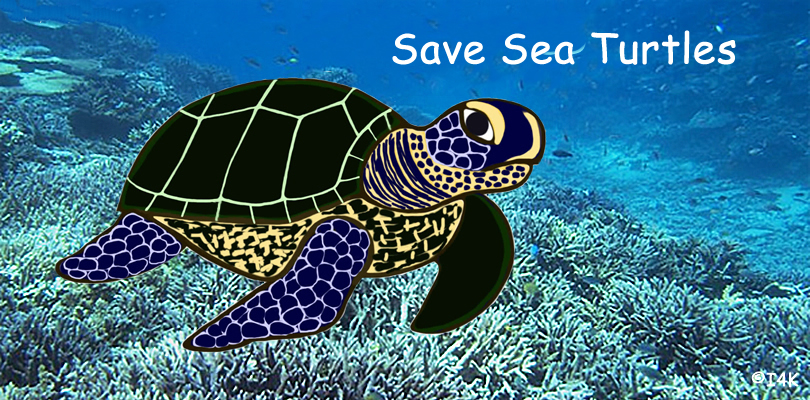 |
 |
What kills sea turtles? |
There are no statistics, however reserchers estimate that in the past 20 years, millions of sea turtles have died due to entanglement by
fishing nets or other causes in the world. In America, statistics show that about 30,000 sea turtles die in accidents every year.
Sometimes, we find dead sea turtles on the beaches in Miyako Island. There are certain beaches where sea turtles are often found.
|
| |
 |
There are several causes of sea turtles death. |
|
|
| 1 |
Sea turtles and sea turtle eggs are sold as merchandise. |
| |
Currently, complete range (all species) and all names of sea turtles in the world are listed on the red list in the IUCN (International Union for Conservation of Nature and Natural Resources).
The Leatherback Sea Turtles in the Pacific Ocean and the Green Turtle in the Mediterranean Sea are decreasing rapidly, with numbers on the trajectory of decline.
All species of sea turtles are CITES (Convention on International Trade in Endangered Species)-listed species and 140 countries have joined in the Washington Convention are prohibited from selling or buying those sea turtles (WWF).
As stated above, the WWF (World Wildlife Fund) must continue the conservation of sea turtle eggs and protect sea turtles from being hunted for merchandising, as a food source, or making souvenirs. |
| |
|
| 2 |
Decreasing or vanishing beaches where sea turtles lay eggs. |
| |
All over the world, beaches are decreasing due to development projects and by sea-level rise and high tide from global warming,
creating bad conditions for sea turtles to lay and hatch eggs. |
| |
|
| 3 |
Baby turtles have many natural predators |
| |
Sea turtle eggs are dug out and eaten by birds and crabs right after they hatch or before the baby sea turtles are able to reach the ocean.
Even if they are able to reach the ocean, some are eaten by fish. There are a variety reports saying that only 1 in 800 or 1 in 5000 baby sea turtles will survive.
At any rate, sea turtles already live under harsh conditions. If survival rate is 1 out of 5000, and if the average egg production is 110, only one turtle survives out of the eggs that 46 mother turtles produce. So from young age, sea turtles live under difficult conditons that are beyond our imaginations. |
| |
|
| 4 |
Increasing sea water contamination and hazardous substances |
| |
Many sea turtles become ill as a result of chemical fertilizer and hazardous substances.
Skin diseases, such as fibropapillomatosis and bacterial infection, are possibly caused by sea water contamination. |
| |
|
| 5 |
Gill nets, set-net fishery, harl |
| |
Sea turtles breathe through their lungs, so they need surface in order to take in oxygen. Young sea turtles consume large amounts of oxygen in situations where they must escape from enermies or simply from swimming long distances, so they need to come up to the sea surface every 20 minutes. Adult sea turtles resurface every one and a half hours. While they are asleep, they require less oxgen so they go up to the surface every 3 to 4 hours.
However, when sea turtls become entangled in gill nets or set- nets, they cannot swim up to the sea surface and so they die from suffocation.
The main cause of death for sea turtles washed ashore in Miyako Island is suffocation caused by gill nets and set-nets.
Sea turtles also become tangled in shirinp harl nets and are unable to escape, causing them to suffocate.
Fishermen protect sea turtles by equipping their haul nets with TED (turtle excluder device) that release sea turtles. TEDs are grid bars that are metal grid bars with hatches that can be released when a large sea animal, such as a turtle, comes into the net. |
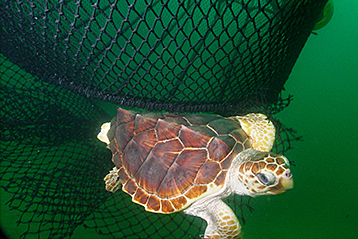
Photo Courtesy:
NOAA
(National Oceanic and Atmospheric Administration)
http://www.nmfs.noaa.gov/pr/species/turtles/teds.htm |
|
| 6 |
Sea turtles mistaken plastic products for food, which blocks their intestines and kills them. |
| |
Sea turtle death due to intestine blockage is increasing as more and more sea turtles mistakenly eat plastic products and styrofoam in the ocean.
Sea turtles are especially susceptible to eating plastic shopping bags, as they look like jellyfish when they are in the water. As jellyfish are one of their favorites foods, intestinal blockage from eating plastic shopping bags is a common cause of death for sea turtles.
(Two pictures below are taken at Miyahara park in Miyako Island. Some plastic pieces and styroforms are found in the intestine of the dead sea turtle
found on the beach.) |
| |
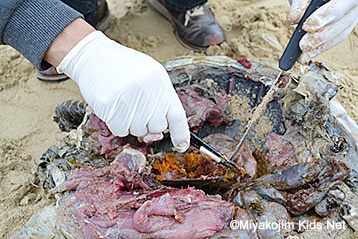
|
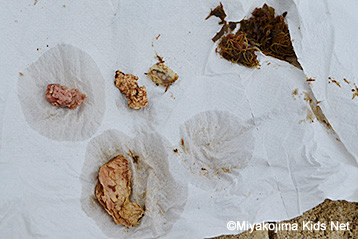 |
| |
Dead sea turtle found on beach in Miyako Island |
Styrofoams and plastics found in
the intestine of dead turtle |
| 7 |
Ghost net |
| |
Drifting fishing nets and abandoned fishing nets into the sea are illegal and called ghost nets. Many sea turtles, seals, and sea birds become entangled by ghost nets and die, as they are unable to remove their bodies and limbs from the nets. NOAA (National Oceanic and Atmospheric Administration) put in great effort to remove ghost nets from oceans and shores to avoid these deaths. |
| |
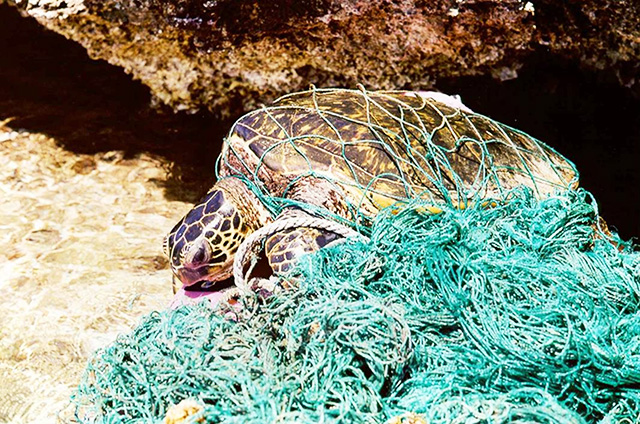
Photo Courtesy: NOAA (National Oceanic and Atmospheric Administration)
http://www.noaanews.noaa.gov/stories2005/s2429.htm |
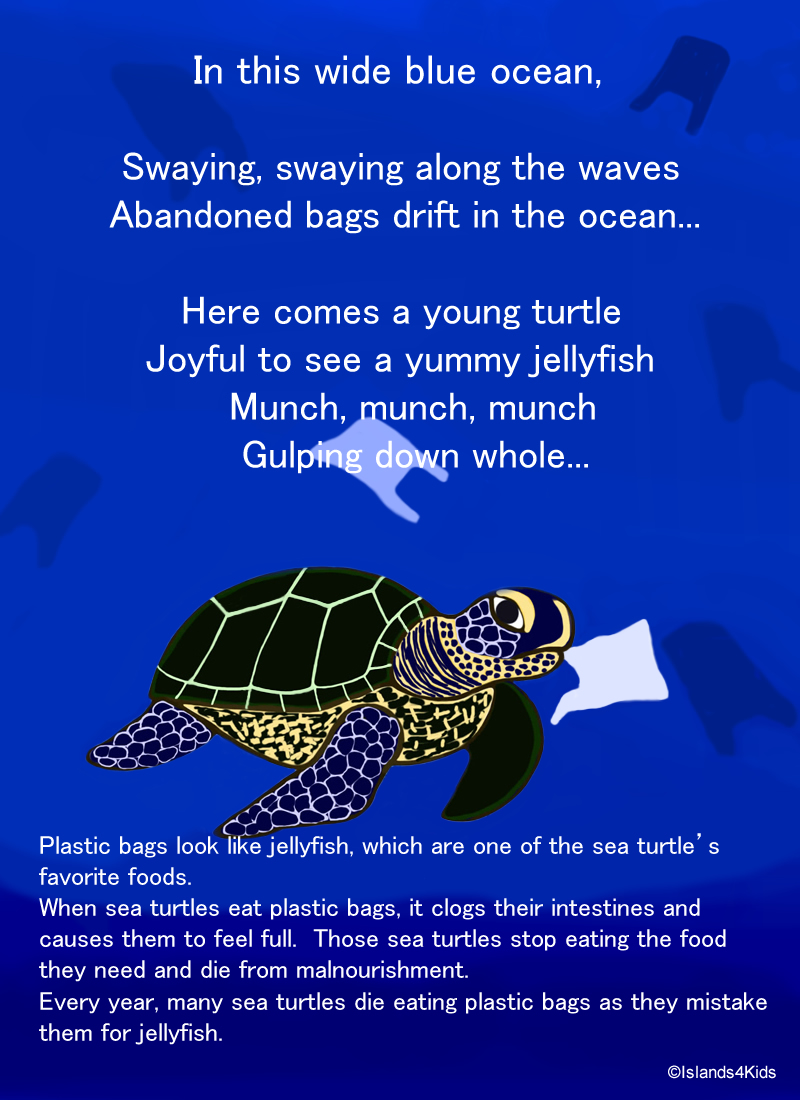
| |
| Pictures taken in Miyako Island, Japan |
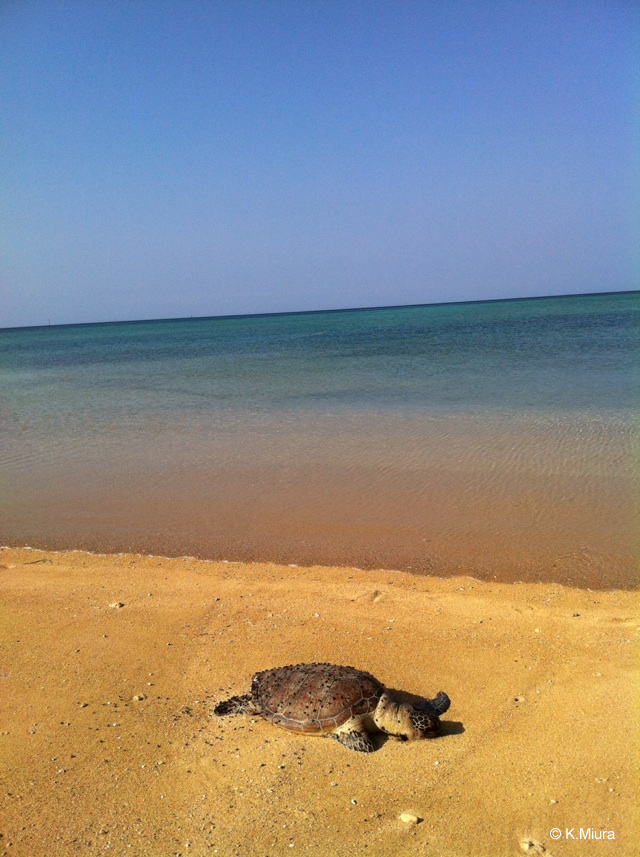 |
| |
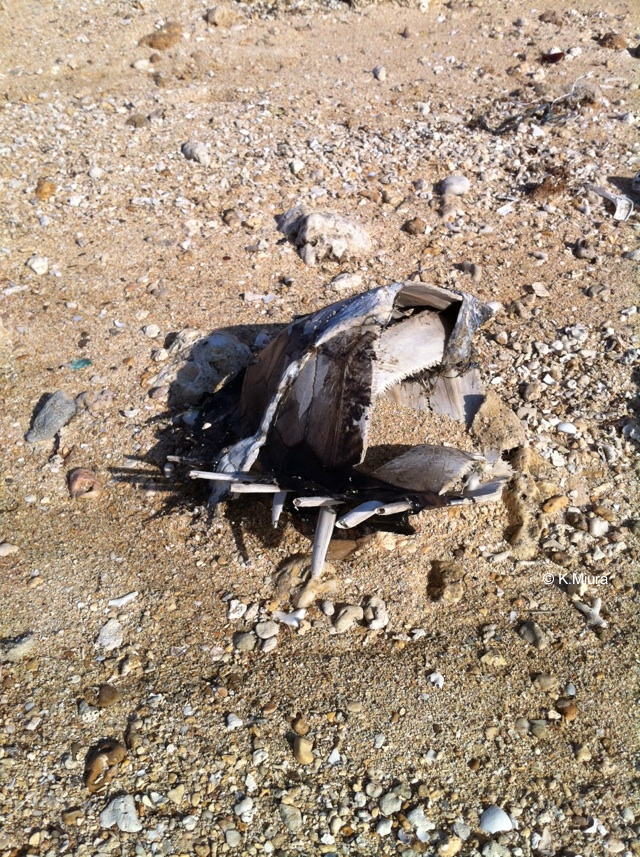 |
| |
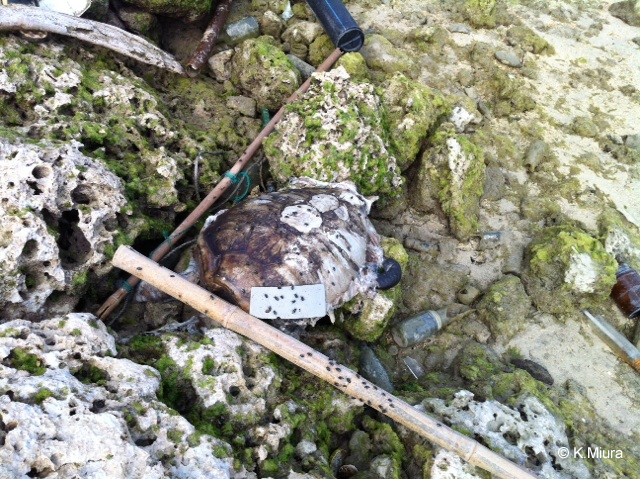 |
| |
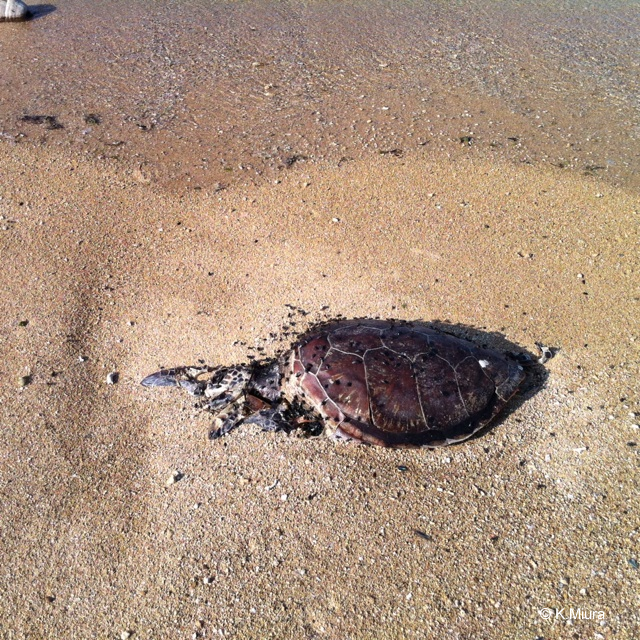 |
| |
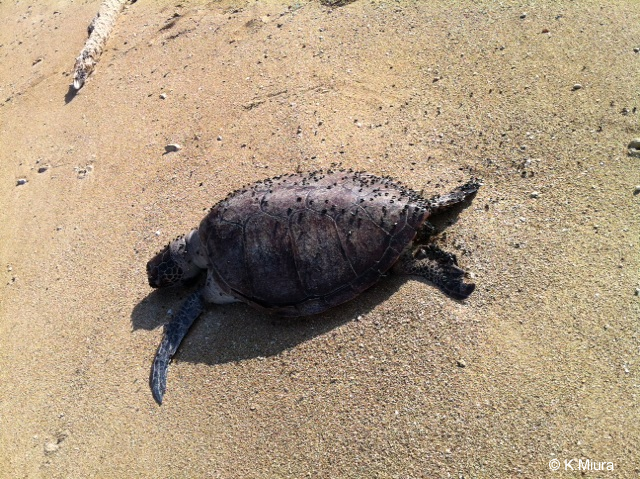 |
| |
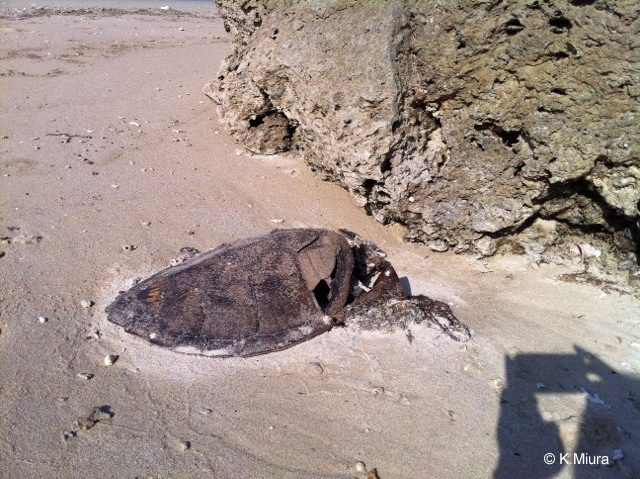 |
| |
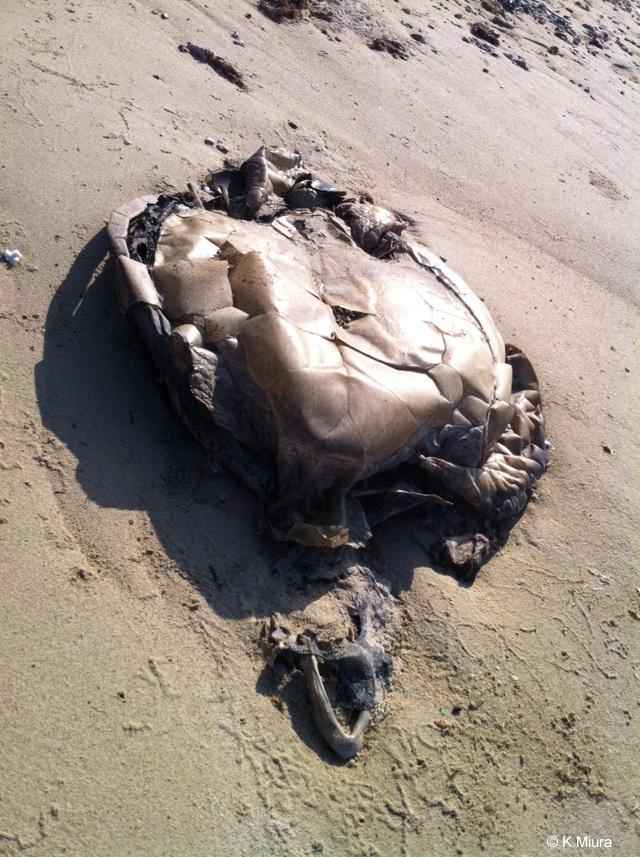 |
| |
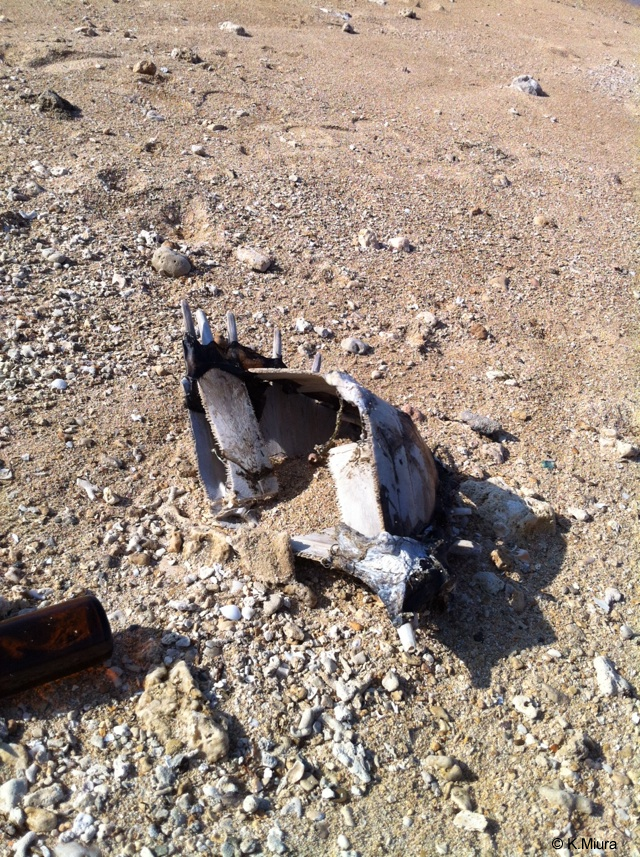 |
| |
| References: |
1. NOAA (National Oceanic and Atomospheric Administration) Fisheries
2. NOAA Fisheries Office of Proteted Resources
3. Stanford University, Center for Ocean Solutions
4. NOAA Pacific Sea Turtle Historical Ecology Working Group
5. Volunteer and Sea Turtle Tourism: A Case Study of a Social-Ecological Conservation Project in Matapalo Beach,
Costa Rica Barnard, Meredith Leigh, University of Washington
6. Biology of Turtles: From Structures to Strategies of Life
Edited by Jeanette Wyneken, Matthew H. Godfrey, Vincent Bels
7. Japan World Wide Fund for Nature
8. Millions of Sea Turtles Trapped by Fishing Nets, Duke University, Futurity.org |
|
 |
|
|